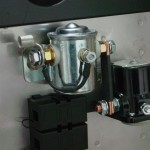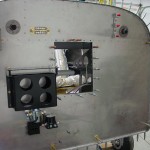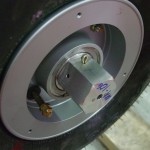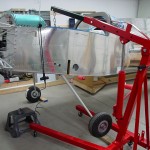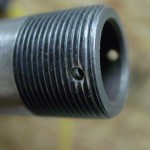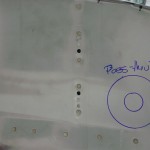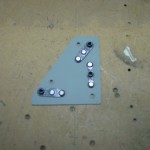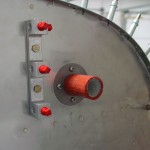Brain dump: Oils
Killing time today, I found myself reading about aviation oils … this post records that for some point in the future when I might want to remember the info.
Break-in period should use mineral oils only, no synthetics. Whether or not AD (ashless dispersant) oils are recommended for break-in depends on who you ask, but ECI (who is the manufacturer of my engine components) recommends Phillips X/C 20W-50, which is an AD oil. The non-AD version is Phillips Type M 20W-50.
AeroSport says to “use mineral oil for the first 25 hours, and avoid synthetic blends for the first 100 hours.” Since avoiding synthetic blends would, then, mean using mineral oils, I wonder if they mean a non-AD oil for the first 25, or perhaps a straight weight oil (rather than a multi-grade).
Multi-grade oils seem to be well liked, either in 100% mineral or synthetic blends, due to their lower viscosity at cold temperatures — which allows for better lubrication on cold starts, and especially in cold weather. Another advantage is that one oil can be used in all seasons, eliminating the need to change oils from summer to winter. There is commentary that says multi-grade oils drain off of engine parts more than straight weight oils do, offering less protection for inactivity and on start-up…on the other hand, oil producers claim research that says this is only a myth. Phillips’ study in their lubricants FAQ:
The oil retention test was performed by measuring the mass of oil retained on the surface of a steel coupon which was suspended from a highly sensitive balance. The steel coupon was dipped into the test oil which was heated to 200°F and then cooled down to room temperature to mimic the situation in aviation engines when the engine is shut down at a higher temperature and then cools down to ambient temperature for idling or inactivity. The total weight of the steel coupon plus the amount of oil retained on the test piece was recorded every 2 hours for 48 hours total. Test results showed that after the parts rested for 12 hours, very little of the original oil film remained on the surface and the rest flowed back to the reservoir regardless of the viscosity and initial temperature of the oils tested. In fact, the oil drains very quickly within the first 2 hours, and then slows down significantly over time leaving less than 8% in mass and 2um in oil film thickness (as measured by FTIR) on the surface after just 20 hours.
Synthetics are another are of debate, with some on both sides; some say it doesn’t matter. Full-synthetic seems to be generally frowned upon, while semi-synthetic (aka synthetic blend) seems to be well-liked. Some info in both the Phillips and Exxon FAQs indicates synthetics don’t do as well at keeping contaminants in suspension, which is why they usually appear in a blend.
The last issue is the anti-scuff additive, aka LW-16702. This is required by Lycoming for a short list of engines (mine does not fall on that list), but recommends it for all engines. I haven’t yet found a recommendation one way or another from ECI literature. Searching the forums is inconclusive. More info from the Phillips FAQ:
Lycoming has three engines in varying configurations that require the Lycoming additive LW-16702 or equivalent. These engines have cam lobe and lifter design features that require additional scuff protection above and beyond the other Lycoming engine models. Below is the list of engines that we found in the Lycoming literature that requires the LW-16702 or equivalent additive as found in Phillips 66 Type A 100AW.
- O-320H
- O-360E
- LO-360E
- TO-360E
- LTO-360E
- TIO-541
- TIGO-541
I do buy into the multigrade argument, and popular oils in that category are:
- Phillips X/C 20W-50: 100% mineral, AD-type, no anti-scuff additive. (ECI recommends for break-in and continuous operation.)
- Exxon Elite 20W-50: synthetic blend, AD-type, with anti-scuff additive.
- AeroShell W15W50: synthetic blend, AD-type, with anti-scuff additive.
All of these seem popular on the forums, with various stories of better success with one or the other. I feel like the Exxon and AeroShell oils had more users in the posts I read than the Phillips did, and several highly positive reviews of the Exxon (the biggest complaint seemed to be the too-big spout on the quart cans). Phillips has no multigrade with the anti-scuff, and the others have no multigrade without it. So, the synthetic/non-synthetic decision goes hand-in-hand with the anti-scuff decision.
All that’s to say that I’ll have to figure this out at some point, but the first 100 hours, at least, will be on the Phillips X/C 20W-50 (unless I come across information that would indicate the Type M, non-AD oil is better for that, but both ECI and Phillips indicate that the AD-type is preferred). Semi-synthetic? Anti-scuff? To be determined; need more research on synthetics. FWIW, the Phillips FAQ downplays synthetics, Exxon talks them up (they sell them), and AeroShell’s site doesn’t talk about it either way. If I had to pick today, based on everything I read, I think I would use the Phillips for the first 100 hours, then the Exxon. Not 100% sure, though…maybe stay with the Phillips. ECI notes that if one needs to replace a cylinder, the oil wouldn’t need to be switched to break it in (though presumably one would do an oil change at that time anyway since the guts of the engine would have been exposed, so perhaps not as big of a deal as they make of it.)
Phillips’ marketing spiel:
X/C 20W-50 is the first approved multiviscosity aviation oil for opposed piston engines. It provides better engine performance than any single-grade oil in all weather conditions. X/C 20W-50 is formulated with an ashless dispersant package allowing for cleaner engine operation. X/C 20W-50 is recommended for break-in. It provides a cleaner and quicker break-in than traditional all mineral single grade oils. Plus, X/C is an operational oil so there is no need to switch oils after break-in. X/C 20W-50 utilizes all petroleum base oils which provide excellent solvency and is successful in preventing lead and lead salts.
Exxon’s marketing spiel:
Exxon Elite is a blend of synthetic and mineral-based oils (plus a highly effective additive package). Why a semi-synthetic? Our engineers determined that a fully synthetic oil may not have the solvency to handle the lead deposits that result from the use of leaded fuel. So they developed Exxon Elite as a semi-synthetic formulation that combines the best of both synthetics and conventional oils.
As a multigrade oil, it offers the flexibility to lubricate effectively over a wider range of temperatures than monograde oils. Compared to a monograde oil, a multigrade oil provides better cold-start protection and a stronger lubricant film at typical operating temperatures. Other benefits include lower oil consumption and better fuel economy.
Followup: some scuttlebutt on VAF, quoting an Aviation Consumer article, suggests that the Exxon and AeroShell multigrades are essentially similar, both having good anti-corrosion, with the AeroShell ahead in anti-wear. Phillips is noted as an “also-ran.” Of course, the articles are from 2002, and the VAF post from 2006, perhaps changes have been made since then?
Posted in Maintenance | Comments Off
